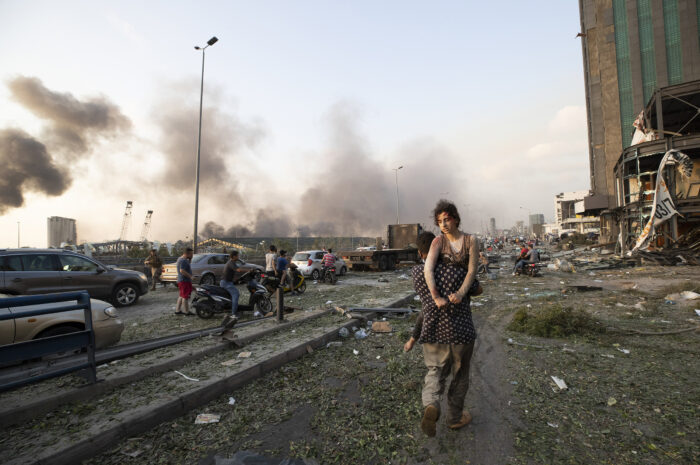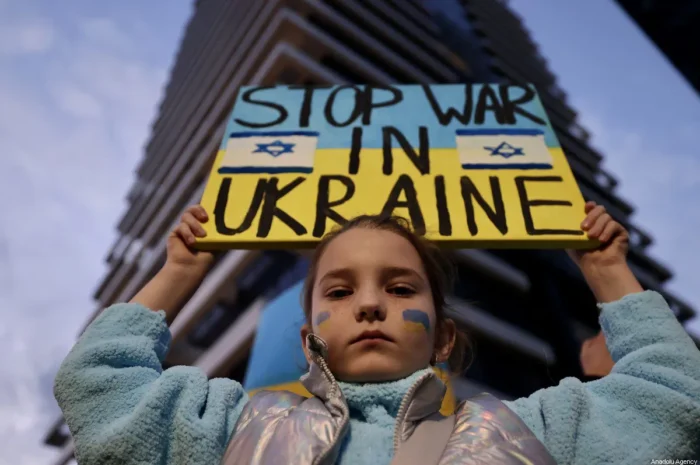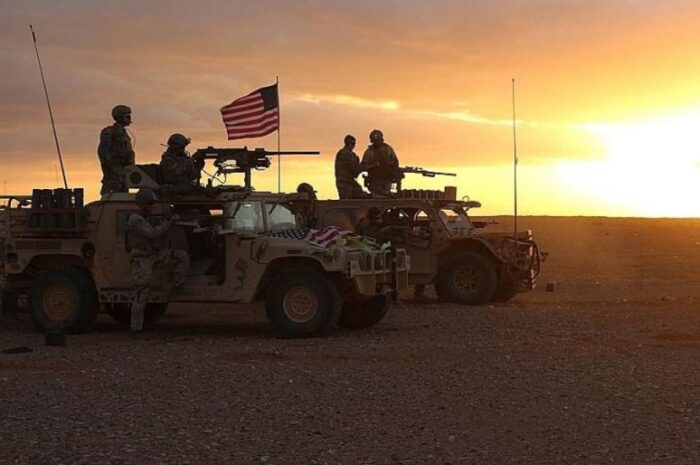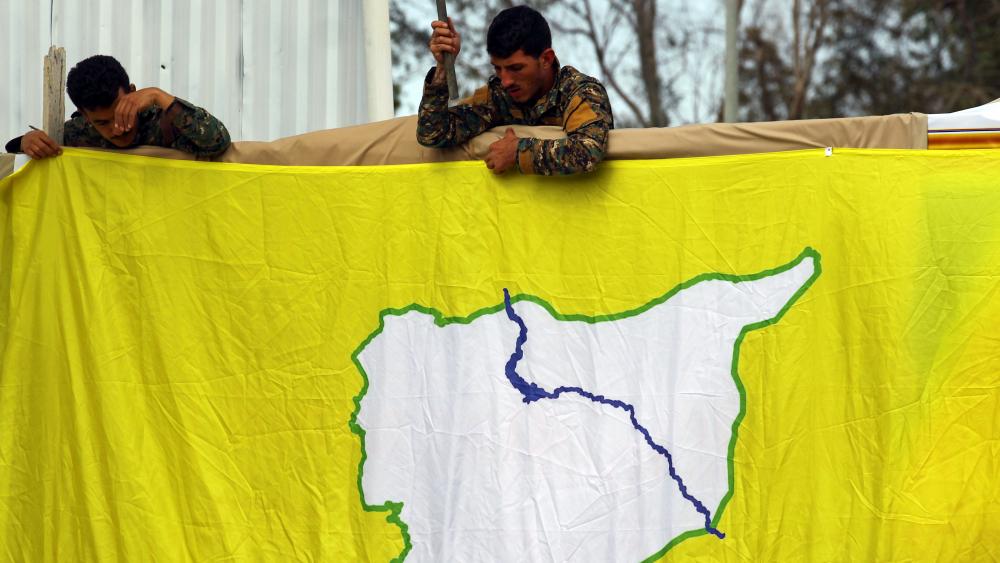
NOTE: The following article originally was published for the Jerusalem Post in the opinion section...
The flag of the Syrian Democratic Forces (SDF) flies high over the last conquered area of the Islamic State’s proto-state, signaling a military defeat to the organization. This comes nearly five years after Abu Bakr al-Baghdadi – leader of the organization – took to a platform in the al-Nuri Mosque in the heart of Mosul to declare the establishment of the proto-state, rallying thousands of Salafist-Jihadists to fight for the self-declared Caliphate. Coming from across the globe to kill and spread carnage, thousands of fighters once eager to expand Baghdadi’s vision now surrender en masse to the Coalition and the SDF, while Baghdadi – once commander of a proto-state that stretched from Raqqa to Mosul – flees to evade capture in the region. He leaves a crumbled Caliphate behind.
As Baghdadi evades detection, the remains of his vision are being cleared out by the SDF and US-led Coalition. Thousands of Syrians gave their lives in the fight against the Islamic State. These “martyrs” – as they are more commonly referred to as – consist of fighters that are Kurdish, Arab, Assyrian and other ethnicities as well as from religious communities across northern Syria. Each community gave up sons and daughters in the war against the Islamic State (ISIS), all in the cause of liberating areas that ISIS controlled. Since the battle of Kobane in 2014 onward, 11,000 lives are estimated by the SDF press office to have fallen in pursuit of the cause, highlighting the large list of martyrs that died in pursuit of peace in northern Syria.
These martyrs include Kurdish fighters from the People’s Protection Units (YPG) and Women’s Protection units (YPJ), the backbone of the SDF and the original combat force that has operated since the start of the war against ISIS. Syriac communities who fought with these Kurdish fighters gave lives to the cause too, especially from the Syriac Military Council (MFS) and Bethnahrain Women’s Protection Units (HSNB). Arab tribes from the north of Syria sent forces to fight in conjunction with this growing multi-ethnic coalition of militias in defiance of ISIS, sending Sanadid Forces and forming ranks with contingents of the Free Syrian Army (FSA), such as the Northern Sun Battalion – later known as the Manbij Military Council (MMC). Each force gave sons and daughters in the fight against ISIS.
The list of martyrs also includes internationalists that ventured from across the globe to join the SDF. They were people who took up arms in the same spirit as the internationalists of the Spanish Civil War over 70 years prior, each holding different beliefs but sharing a desire to eliminate what they perceived to be a modern-day tyranny invested in taking the lives of the innocent. Leaving relatively safe homes and joining local Syrians, these internationalists fought grueling battles in a faraway land called Syria. Internationalists such as British volunteers Anna Campbell and Jac Holmes, American volunteer David Taylor as well as many more would not return home alive, dying instead on the battlefield.
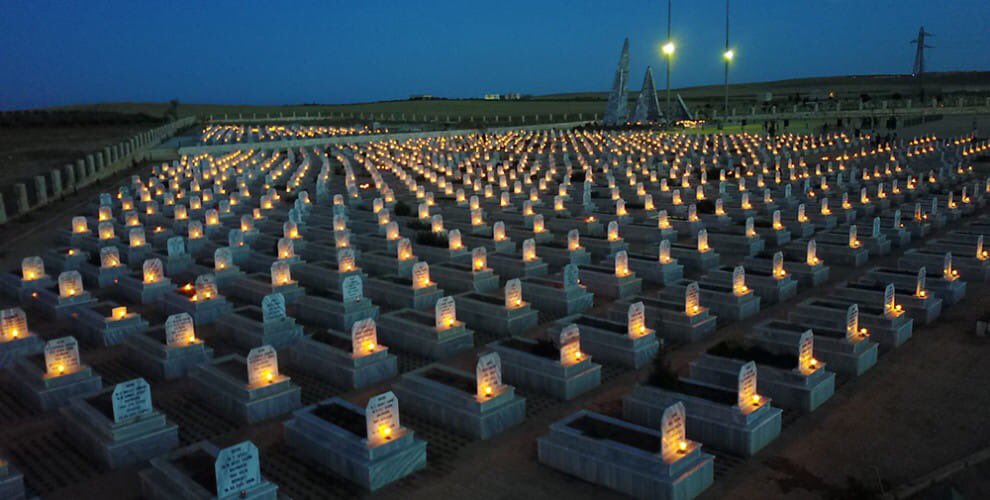
Source: Unknown but taken originally from this tweet.
Across northern Syria (Rojava), hundreds of monuments dedicated to those who fell in the war against ISIS have been erected. Decorated with the portraits of thousands of martyrs, these locations provide a sad reminder for locals and visitors of the cost of this war. Each portrait shows the individual’s face, along with the force that they fought in. For example, David Taylor’s portrait shows his face with the background of the YPG. Cemeteries are also found across the north, where families, friends and loved ones still travel frequently to mourn. These graves contain the bodies of fighters and civilians alike, including humanitarian workers and local journalists such as Dilishan Ibish – a Kurdish journalist who perished in an explosion in 2017.
In Kurdish there is a proverb used to remember those that perished. The proverb is “Shaheed namirin” and it translates in English as, “martyrs never die.” Connected to the culture of martyrdom that is common but not exclusive to communities in the Middle East, the proverb evokes an understanding of dying in pursuit of a noble cause. This can be best understood for those unfamiliar with martyr culture by reading Mary Elizabeth Frye’s poem “Do Not Stand At My Grave And Weep.” The poem speaks about the nature of death and how the spirit of those that perished lives on in the world. If the last line of Frye’s poem were to be repurposed to better understand the martyr culture of northern Syria, it would read something like this:
“Do not stand at my grave and cry; While Rojava lives, I did not die.”
Over 30,000 foreign volunteers joined the Islamic State to fight for Baghdadi’s vision. This vision included the mass slaughter of local indigenous people, from Yazidis to Arabs and thousands of others, a violence that robbed thousands of their homes and lives. In response to this mass violence that swept across Syria and Iraq, people took up arms in defiance of the organization, giving their lives to destroy the vision that Baghdadi sought to implement. And as the dust settles five years later with the deaths of over 10,000 anti-ISIS fighters, the cause that each fought for still goes on. Only now, over 40,000 hands are doing that work and building the society for tomorrow’s generation.
Plenty of work remains ahead now for the SDF and the US-led Coalition as the next phase of the war begins. With liberated areas in need of reconstruction and ISIS sleeper cells active in both Syria and Iraq, it is important to note that the elements that led to the formation of the Islamic State are still present. If those elements continue to remain, so too will the organization’s appeal. However, there will always be people ready to take up the struggle against ISIS and preserve all that makes life worth living. As long as there is resistance to tyranny, there will always be another dawn for humanity.
Written by Anthony Avice Du Buisson (07/04/2019)

